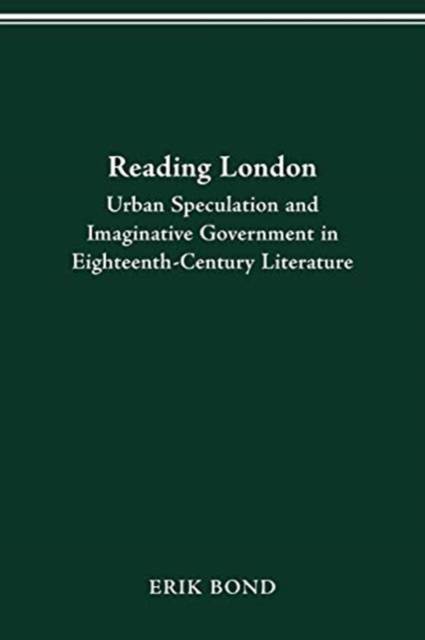
- Afhalen na 1 uur in een winkel met voorraad
- Gratis thuislevering in België vanaf € 30
- Ruim aanbod met 7 miljoen producten
- Afhalen na 1 uur in een winkel met voorraad
- Gratis thuislevering in België vanaf € 30
- Ruim aanbod met 7 miljoen producten
Zoeken
€ 38,95
+ 77 punten
Omschrijving
While seventeenth-century London may immediately evoke images of Shakespeare and thatched roof-tops and nineteenth-century London may call forth images of Dickens and cobblestones, a popular conception of eighteenth-century London has been more difficult to imagine. In fact, the immense variety of textual traditions, metaphors, classical allusions, and contemporary contexts that eighteenth-century writers use to illustrate eighteenth-century London may make eighteenth-century London seem more strange and foreign to twenty-first-century readers than any of its other historical reincarnations. Indeed, "imagining" a familiar, unified London was precisely the task that occupied so many writers in London after the 1666 Fire decimated the City and the 1688 Glorious Revolution destabilized the English monarchy's absolute power. In the authoritative void created by these two events, writers in London faced not only the problem of how to guide readers' imaginations to a unified conception of London, but also the problem of how to govern readers whom they would never meet. Erik Bond argues that Restoration London's rapidly changing administrative geography as well as mid-eighteenth-century London's proliferation of print helped writers generate several strategies to imagine that they could control not only other Londoners but also their interior selves. As a result, Reading London encourages readers to respect the historical alterity or "otherness" of eighteenth-century literature while recognizing that these historical alternatives prove that our present problems with urban societies do not have to be this way. In fact, the chapters illustrate how eighteenth-century writers gesture towards solutions to problems that urban citizens now face in terms of urban terror, crime, policing, and communal conduct.
Specificaties
Betrokkenen
- Auteur(s):
- Uitgeverij:
Inhoud
- Aantal bladzijden:
- 308
- Taal:
- Engels
- Reeks:
Eigenschappen
- Productcode (EAN):
- 9780814257104
- Verschijningsdatum:
- 29/01/2021
- Uitvoering:
- Paperback
- Formaat:
- Trade paperback (VS)
- Afmetingen:
- 152 mm x 229 mm
- Gewicht:
- 453 g

Alleen bij Standaard Boekhandel
+ 77 punten op je klantenkaart van Standaard Boekhandel
Beoordelingen
We publiceren alleen reviews die voldoen aan de voorwaarden voor reviews. Bekijk onze voorwaarden voor reviews.











